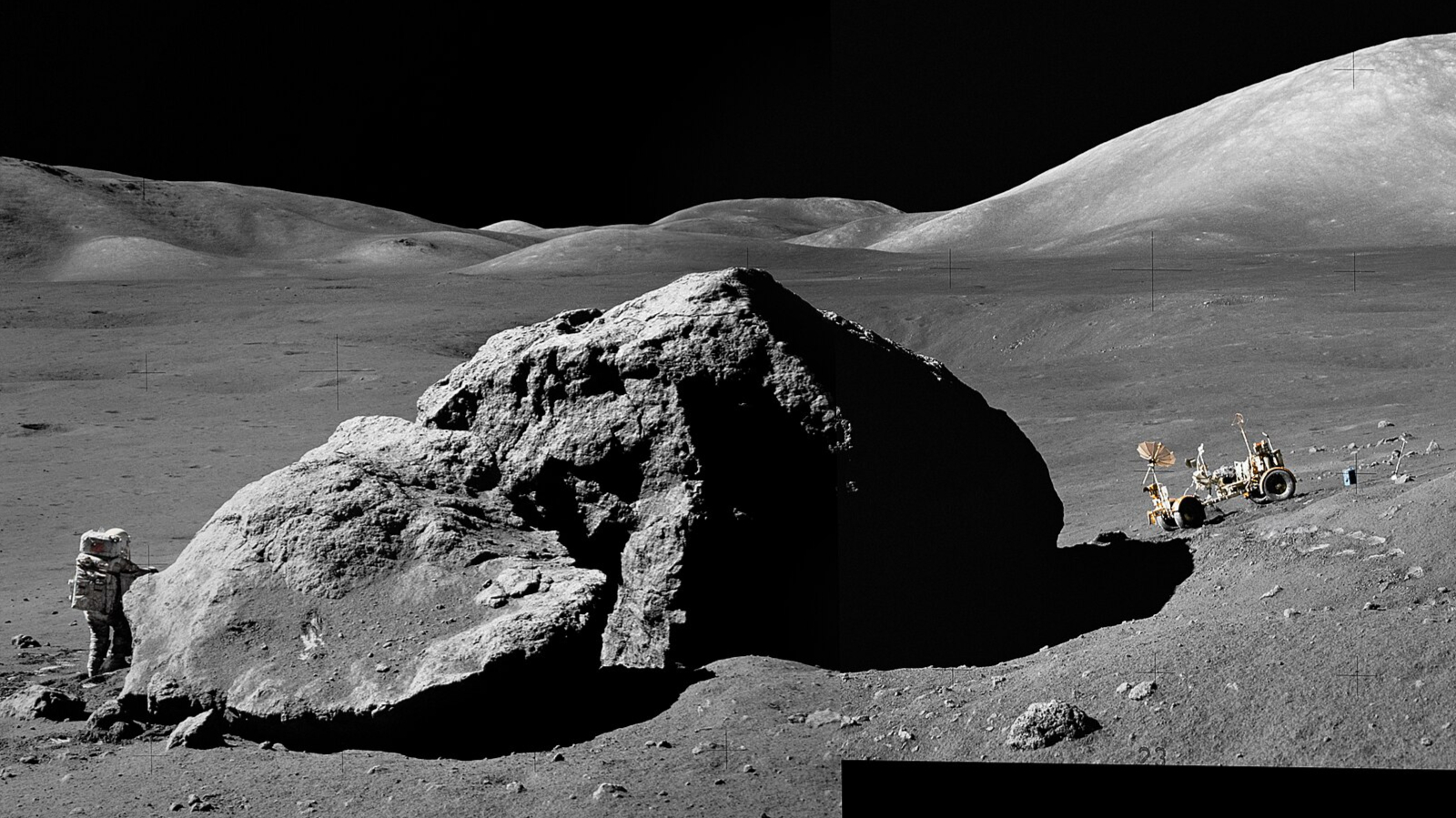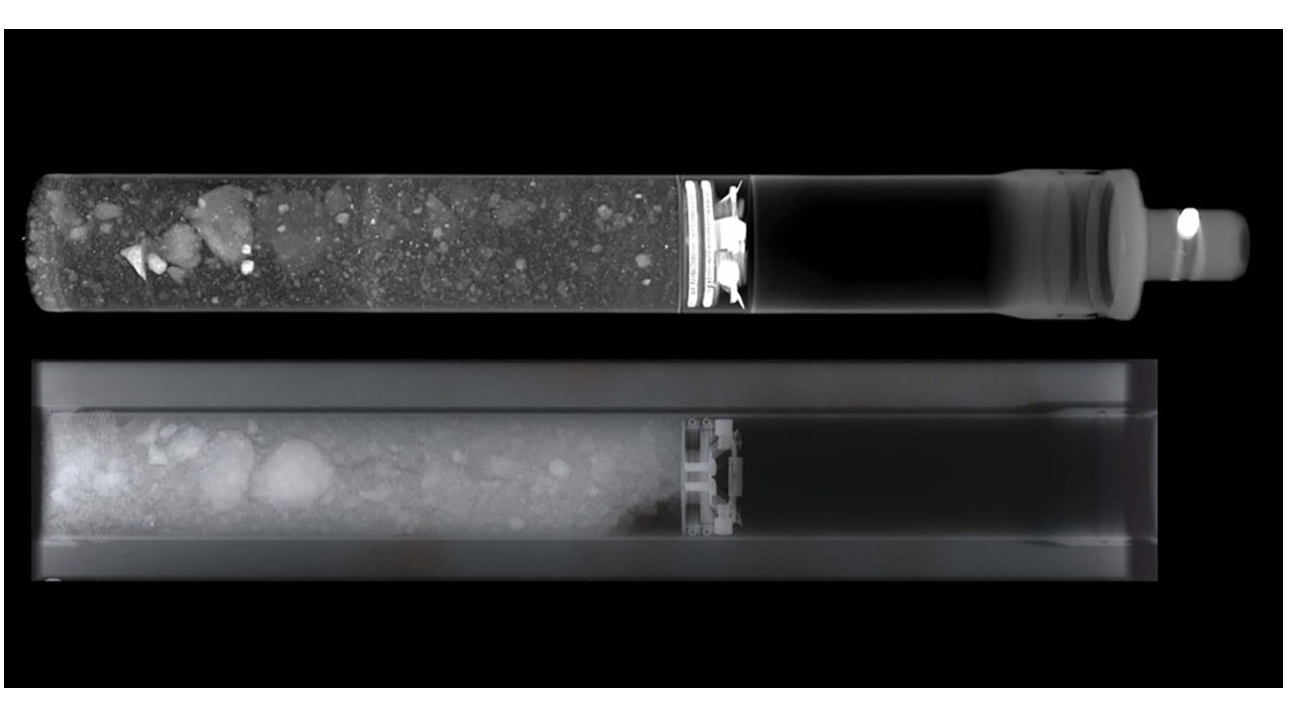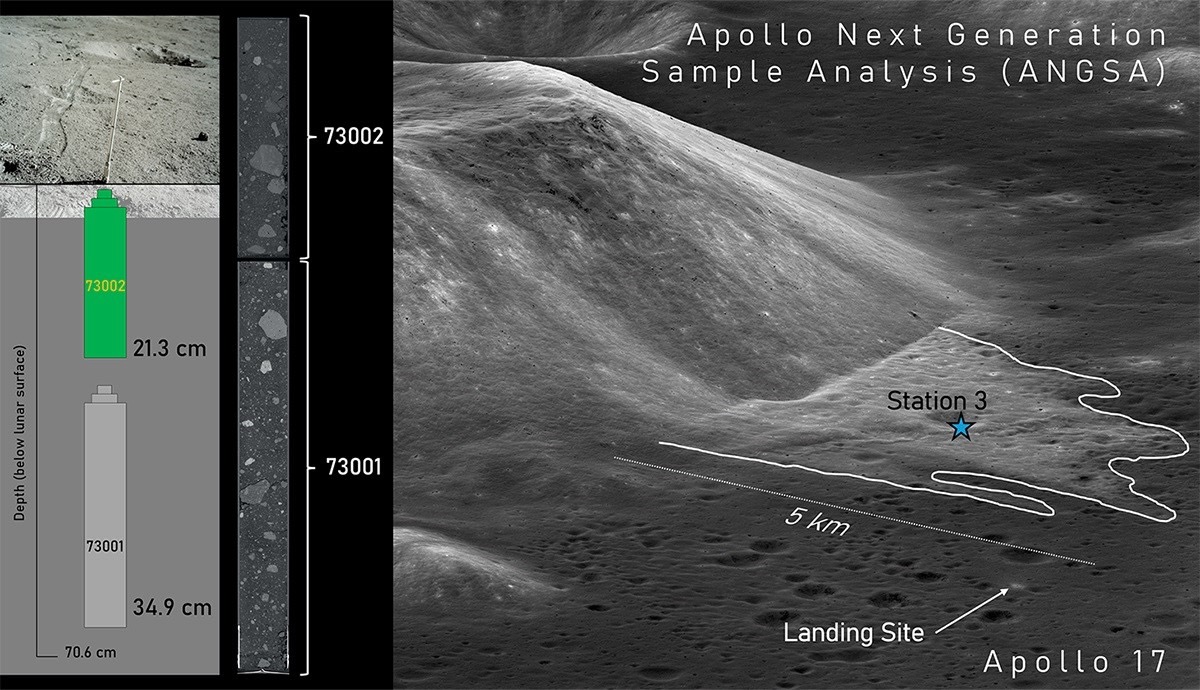What caused the only known lunar landslide? Newly opened Apollo 17 moon samples may hold the answer
Analysis of previously untouched preserved core samples from the mysterious 'Light Mantle' landslide shed light on what caused this huge tumbling of rocks.

A mysterious lunar landslide might be the product of large chunks of debris from the impact that formed the crater Tycho slamming into the side of a moon mountain.
The Light Mantle, which is a bright 5-kilometer-long (3.1 miles) streak emanating from the base of a 2-km-tall (1.2 miles) mountain called South Massif, was a key target for NASA's Apollo 17 mission in 1972. With geologist Harrison Schmitt as a member of the crew, Apollo 17 returned from the moon with 243.6 pounds (110.5 kilograms) of rock samples, including two core samples from the Light Mantle.
There was so much material in the samples that some of it was kept away, stored and sealed, until the time came that scientists had better technology with which to study the samples.
That time is now.
"NASA were really forward-thinking during the Apollo missions to put some samples aside," said geologist Giulia Magnarini of London's Natural History Museum in a statement. "They were stored so that they could be studied using more advanced technology and new scientific approaches that hadn't even been thought of at the time."
The origin of the Light Mantle landslide is a mystery, partly because it is the only known landslide on the moon, meaning that we have nothing to compare it to. It's described as a "long run-out" landslide, as the debris that rolled down the mountain spilled out for a long way onto the Taurus-Littrow valley, but what carried it so far is also uncertain.
Using modern micro-CT scanning, which employed medical-level scans on the previously untouched core samples from the Light Mantle, Magnarini and her colleagues investigated clasts, which are rocky fragments that broke off from the slope of South Massif. They then compared the shape and composition of the clasts with what was predicted by computer models.
Breaking space news, the latest updates on rocket launches, skywatching events and more!
"The clasts tell us a lot about the process of the landslide itself and how the material within it has been transported," said Magnarini. "We saw that the finer material coating the clasts in the core comes from the clasts and not the surrounding debris, suggesting that the clasts broke up and helped the landslide to flow more like a fluid."

This would explain why the landslide produced such a long run-out, but what triggered the landslide in the first place? Magnarini's best bet is the formation 108 million years ago of the landmark lunar crater Tycho in the moon's southern hemisphere, far from Apollo 17's landing site.
Tycho is famous for its bright rays of ejecta material that cover a large area of the moon's southern hemisphere, and there are chains of small secondary craters leading away from Tycho, produced by large chunks of debris from the main impact falling back down onto the lunar surface. One of these chains points in the direction of South Massif and, despite the distance, Magnarini thinks that a chunk of debris from the Tycho-forming impact flew halfway around the moon and crashed into South Massif.
"It has been suggested that some of the material thrown up by the creation of Tycho might have struck South massif," said Magnarini. "This could have triggered the landslide that ultimately formed the Light Mantle."
Tycho's young age fits the bill; an older landslide would have been eroded away by micrometeorites long ago. That might be why we no longer see other landslides on the moon; impacts like Tycho are very rare now, compared to 3.5-4 billion years ago when most of the moon's craters formed.

Overall, Magnarini sees her research as helping to bridge the Apollo missions with the current Artemis program and NASA's plans to return astronauts to the surface of the moon.
"We've learned so many lessons from these samples about how to preserve, store and open lunar material without damaging the contents," said Magnarini. "This is already feeding into plans for Artemis' science and helping to develop new instruments."
Magnarini's team's findings were published Aug. 2 in the Journal of Geophysical Research: Planets.

Keith Cooper is a freelance science journalist and editor in the United Kingdom, and has a degree in physics and astrophysics from the University of Manchester. He's the author of "The Contact Paradox: Challenging Our Assumptions in the Search for Extraterrestrial Intelligence" (Bloomsbury Sigma, 2020) and has written articles on astronomy, space, physics and astrobiology for a multitude of magazines and websites.
You must confirm your public display name before commenting
Please logout and then login again, you will then be prompted to enter your display name.
